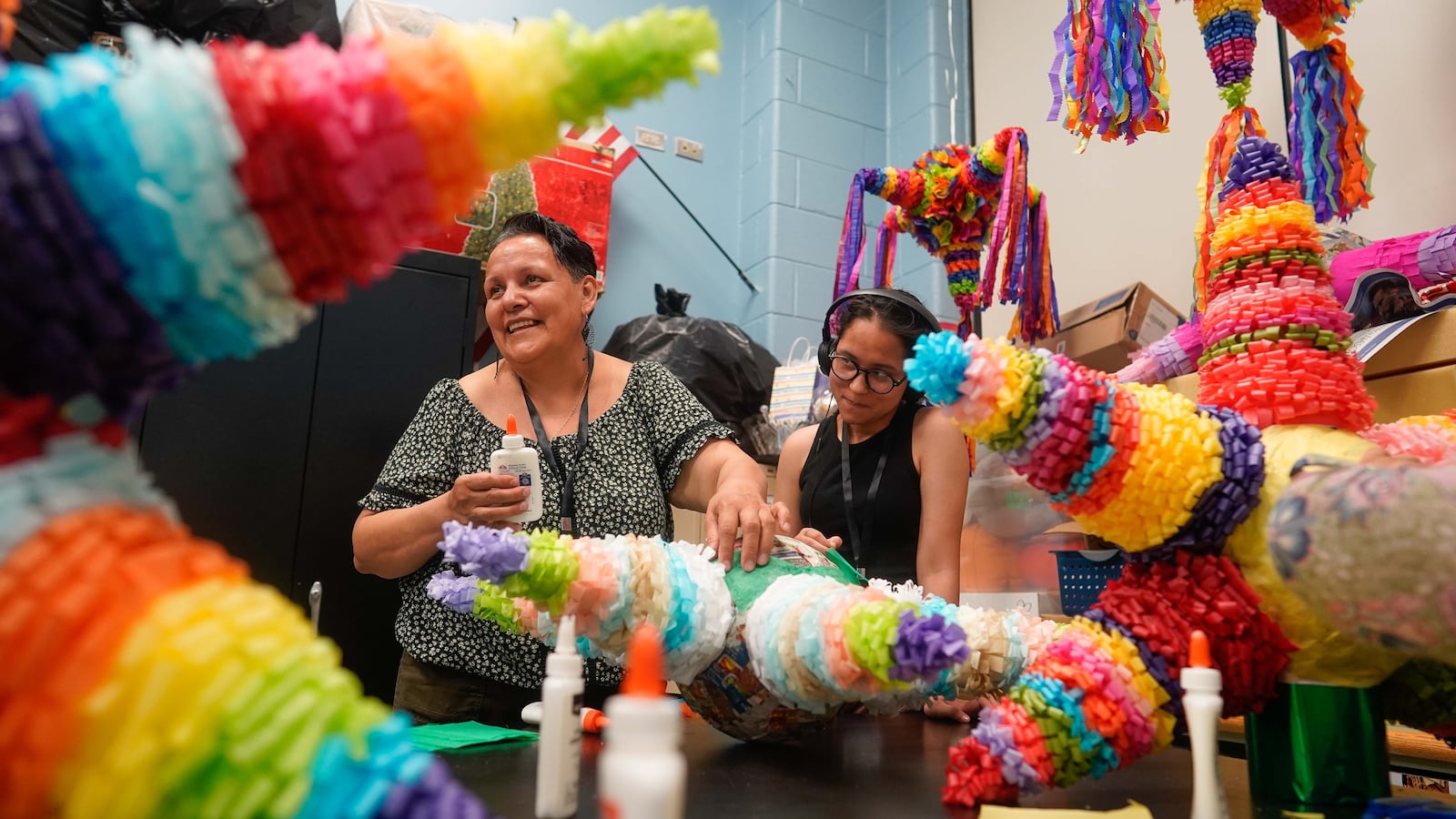On a recent July morning, students at Brighton Park Elementary prepared chicken tenders and honey mustard sauce with a visiting chef in the Southwest Side school’s gleaming kitchen. Later, some went to a boxing class, pairing off to spar on blue mats.
Next door, about 20 students on the school’s student voice committee huddled to brainstorm ideas for a campaign to reopen Chicago’s shuttered mental health clinics. They were getting a $1,000 stipend to participate.
And in a room downstairs, school moms enrolled in a free arts and crafts class folded colorful strips of paper into ruffles to decorate star-shaped piñatas.
The robust summer program is one upshot of the elementary’s status as a Sustainable Community School, a joint initiative of the Chicago Teachers Union and the district, in which 20 high-poverty campuses receive up to $500,000 a year. In tandem with local nonprofits, the schools offer additional after-school and other programs, steer families to services in the community, and seek to engage students and parents in school decisions.
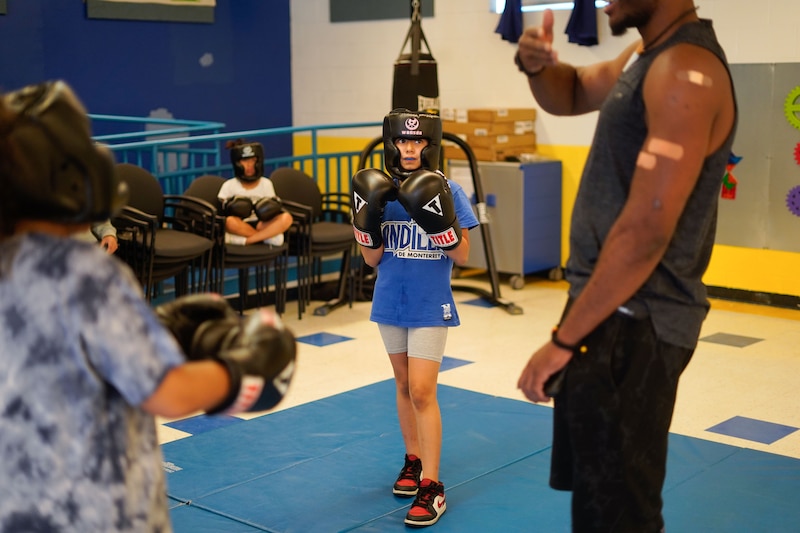
Now, Mayor Brandon Johnson and his transition team want to expand the program, to as many as 200 of the district’s roughly 500 schools — a centerpiece of his promise to give a boost to the city’s often shrinking neighborhood schools. That’s even as proponents recognize that such growth would come with a major price tag, at a time when the district faces a murkier financial outlook.
A Chalkbeat analysis showed that through the turbulent past few years, this group of schools saw graduation tick up and attendance dip largely in lockstep with other high-poverty neighborhood schools, though the community schools started with lower baseline averages. So far, the overwhelming majority of those 20 campuses have not staved off steep districtwide enrollment losses, and many have been particularly hard hit — even as its proponents hope the model might help stabilize enrollment in the longer term.
School leaders such as Brighton Park principal Sara Haas say the initiative has been game-changing, paying for key staff, improving campus cultures, and forging stronger bonds to families and neighborhoods. Some are also upfront that their campuses have a way to go to become true neighborhood hubs with broad family involvement and a wide array of services.
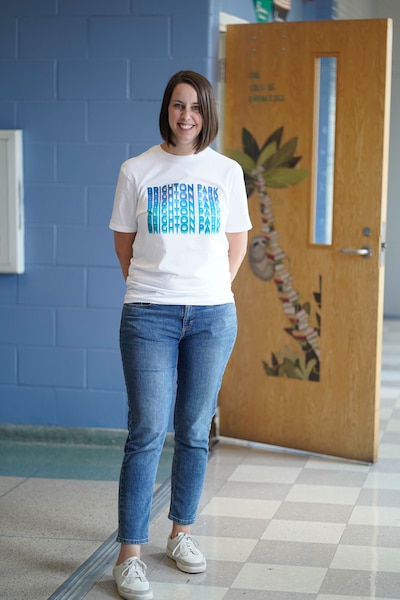
Several evaluations of Sustainable Community Schools point to encouraging headway in implementing the program despite the pandemic’s upheaval — as well as difficulties in jibing with nonprofit partners and sometimes uneven buy-in from staff.
Chicago is part of a recent national push to expand what’s more commonly known as full-service community schools, led by teachers unions and other proponents. U.S. Education Secretary Miguel Cardona is also a fan.
Studies of the model nationally have shown promising gains in attendance, academics, and students’ sense of belonging at school. Others have yielded underwhelming results, drawing an unsurprising conclusion:
It’s all about how the model is implemented.
At Brighton Park Elementary, school leaders say thinking differently about what school can be is key.
“So much of community schools is about shifting your mindset and about how you approach the model,” said Haas.
Chicago eyes a community school expansion
In some ways, said Brighton Park’s Haas, the predominantly Latino campus was a great fit to join the pilot group of Sustainable Community Schools in 2018.
In keeping with the model’s emphasis on embracing restorative justice, the school had already started shifting away from punitive discipline. Over more than a decade, the campus had forged a close relationship with the Brighton Park Neighborhood Council — the nonprofit that would become its partner agency in the new initiative. The organization had run after-school and summer programs at the school and funded a part-time clinician position.
The council also offered input as Sustainable Community Schools was conceived, inspired by the 2015 fight and hunger strike that warded off the closure of Dyett High School on Chicago’s South Side. The initiative was ultimately enshrined in the teachers union contract.
Dyett and the 19 other participating campuses were chosen among open enrollment schools in communities where at least 80% of students qualified for subsidized school meals.
The program was built on the idea of supporting “the whole child” — and transforming schools into “community hubs designed to provide wraparound academic, health, and social support for the entire community beyond the traditional 9 am to 3 pm school day,” as the teachers union overview of the program puts it.
Each school paired up with a partner agency, which among other things staffed a resource coordinator to connect families with anything from rental assistance and local food pantries to adult education opportunities. Many schools would also use the added funding to bring on other key support staff: mental health and crisis response counselors, parent or community engagement coordinators, and restorative justice coaches.
The program was not the district’s first foray in building full-service community schools. Many of the pilot schools, including Brighton Park Elementary, were already receiving 21st Century Community Learning Center grants — federal dollars passed on by the state that have helped power the district’s separate Community Schools Initiative, which started in 2003. With roughly 200 schools, that longer-standing program is considered one of the largest community school networks in the country.
But schools receive up to about $150,000 through that older Community Schools Initiative – a fraction of the up to $500,000 funding boost in the union-district Sustainable Community Schools program. As a result, the scope of that earlier initiative is more limited, focused largely on expanding after-school and summer programs and services, and increasing family engagement.
“There’s just not enough money in the Community School Initiative model to address foundational issues of equity,” Patrick Brosnan, the executive director of the Brighton Park Neighborhood Council said. “In a perfect world, we need to move toward an expansion of both models.”
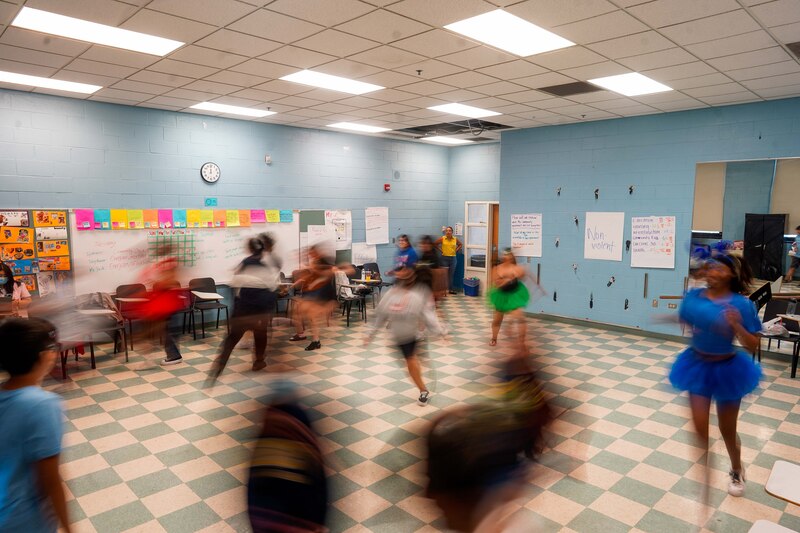
For Chicago’s new mayor, the focus is on expanding the Sustainable Community Schools model. In fact, Brandon Johnson’s mayoral transition committee, on which Brosnan served, called for making that a district priority in a July report that did not mention the Community School Initiative.
Jen Johnson, the deputy mayor for education, youth, and human services, said in a recent interview with Chalkbeat that the administration’s vision is to work toward a “Sustainable Community Schools district,” even as she acknowledged the major cost of converting all or most campuses into full-service community schools. At current levels of funding, adding 180 schools to the initiative would cost $75 million to $90 million.
Sustainable Community Schools draw praise — and nuanced evaluations
Jhoanna Maldonado, a Chicago Teachers Union organizer and its Sustainable Community Schools point person, says the pandemic brought disruption — but also vindication for the model.
The schools and their community partners were better prepared than most to respond to families’ emergency needs — from food and housing assistance to internet access and laptops for remote learning. They were also often in better positions to address the heightened mental health needs of students and parents.
“That made really difficult work other schools were scrambling to figure out easier,” said Maldonado, a former teacher at Yates Elementary, one of the campuses in the program.
Chalkbeat compared some metrics at the 20 Sustainable Community Schools and at other neighborhood schools that had a poverty rate of 80% or more in 2018. Generally, these campuses have seen similar trends play out since 2018 amid the pandemic’s upheaval: Attendance dipped and chronic absenteeism spiked at comparable rates. Graduation at the high schools participating in the initiative ticked up at a slightly lower rate than at other high-poverty neighborhood high schools.
With the exception of Dyett and Richards high schools, the Sustainable Community Schools have not avoided the enrollment declines that the pandemic accelerated across Chicago. A number — including Brighton Park, Beidler, McCormick, Morrill, and Yates elementaries as well as Farragut and Uplift high schools — were particularly hard hit, losing a quarter or more of their enrollment since the initiative started.
Maldonado, the teachers union organizer, said the district needs better measures of students’ sense of belonging and pride in their school — rather than traditional metrics such as attendance — to capture the value of community schools.
“You walk into a school, and you feel a different vibe,” she said. “You see that people are having those tough conversations.”
Local and national evaluations of community school initiatives offer a nuanced picture, suggesting that smart and careful implementation is paramount to see payoff for students.
On the eve of the pandemic, an analysis of almost 20 rigorous studies of the model found some showed learning and school culture gains, and others showed little effect. Evaluations of Communities In Schools, a national program that works with about 200 schools in Chicago, found it led to academic and other gains in Chicago and in Wichita, Kan., but not in two other cities.
William Corrin, the director of K-12 education at the think tank MDRC, says research so far has not pinpointed why some schools appear more successful in rolling out the model. The mixed evidence likely reflects the heavy lift of getting that model right — and the fact that it takes time to see results.
“A school is a really complex system on its own, with many different players doing different work,” he said. “When you shift to a community school model, you are increasing the number of stakeholders working with students.”
In Chicago, evaluations of Sustainable Community Schools by the American Institutes for Research and the University of Wisconsin — largely based on interviews and surveys of staff at schools and partner agencies — found positive feedback as well as uneven implementation across campuses, though all studies stress the challenges of a pandemic-era rollout.
Educators, school leaders, and other staff reported embracing more culturally responsive teaching practices and offering more social-emotional and mental health support for children. The evaluations also captured pushback against restorative justice in some schools or a sense that educators needed more training and other help to introduce them.
Three principals told researchers that they felt their partner agencies were out to further their own missions rather than understand the needs of the schools and team up on pursuing them.
Campuses strive to get rolling out the model right
Carlos Reyes, a seventh grader on Brighton Park’ student voice committee, says the school’s emphasis on student wellness and leadership has shaped his experience there.
He felt better this past school year after he opened up about the death of his dog in a talking circle with sympathetic classmates. This summer, he also spoke at a City Hall protest as part of the mental health clinics campaign.
“I feel really accomplished when I get to speak out,” he said.
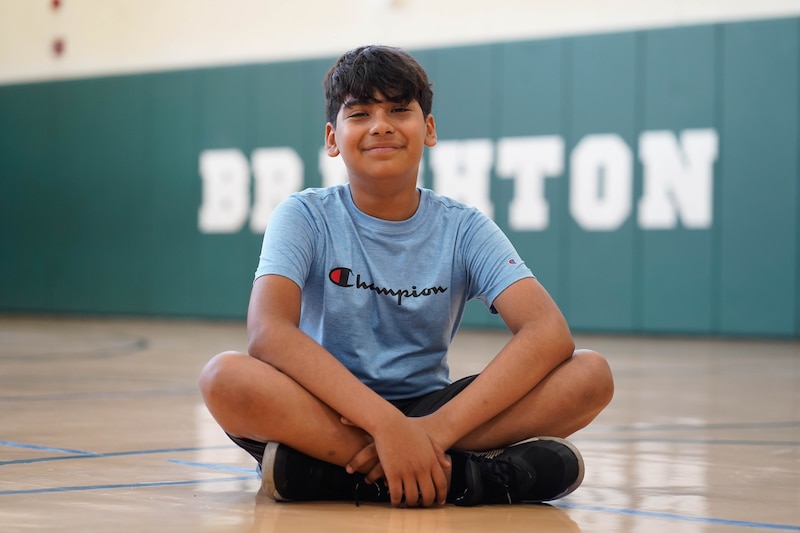
Meanwhile, Stephanie Concepcion Alonso, the mom of a Brighton Park Elementary first grader, got a job as a college mentor at nearby Kelly High — her alma mater and another Sustainable Community School — while she attended Harold Washington College. More recently, she tutored at Brighton Park Elementary, and come fall, she will work in its after-school program.
“Sustainable Community Schools has had this compound community-building effect,” said Brosnan, the head of the Brighton Park Neighborhood Council. “We are hiring from the neighborhood, and it becomes an engine for economic development in the community.”
Brighton Park Elementary made its part-time mental health clinician and parent coordinator full-time positions. It set up a “peace room” for talking circles and installed a washer and dryer to ensure clean uniforms for students.
Still, principal Berg says the rollout in some ways remains a work in progress. She wants the stable of student leaders the school is cultivating to be more involved in weighing in on school decisions. And while the school leans on a handful of active parents, she wants to see broader parental involvement.
At Richards High School, another Sustainable Community School on the Southwest Side, principal Ellen Kennedy says the program has been one of the most influential initiatives in her six years at the helm. It pays for a youth intervention specialist, parent engagement coordinator, a full-time clinician, after-school clubs, and tutoring. It has allowed the school to step up outreach to families and shift neighborhood perceptions of the campus — efforts that Kennedy credits for a 12% increase in enrollment since the program started.
“For us, Sustainable Community Schools is not this extra initiative,” said Kennedy. “It’s the way we want school to function and run on the regular.”
But Kennedy said that as a growing nonprofit with a citywide and national reach, Youth Guidance — the school’s partner agency, known for providing the Becoming a Man mentoring program — didn’t feel as connected to the local community and didn’t have the neighborhood presence the campus had sought. And she said “accountability issues” with programming Youth Guidance provides on campus also affected a decision Richards made this spring to replace it with the Brighton Park Neighborhood Council as its lead partner agency.
Two other Sustainable campuses had previously switched nonprofit partners.
In a statement, Youth Guidance noted it will continue to work with its other four partner high schools in the program and to provide mentoring at Richards, citing “an unwavering commitment to the city’s youth, families, and schools.”
Miguel del Valle, who stepped down as Chicago’s school board president in June, recently called for a closer look at the district’s nonprofit partners in both community schools programs. A former member of the Federation for Community Schools board, he says he is a passionate believer in the model. But he said he doesn’t believe all the partners involved in the district’s community school programs are delivering, though he declined to name specific nonprofits or share details about his concerns.
“I really feel we should have higher expectations of our community partners,” he said. “CPS has to keep track of how they are doing rather than leaving it up to principals.”
He also said many of the district’s community schools are not providing enough classes and services for parents and other residents to truly serve as a community hub.
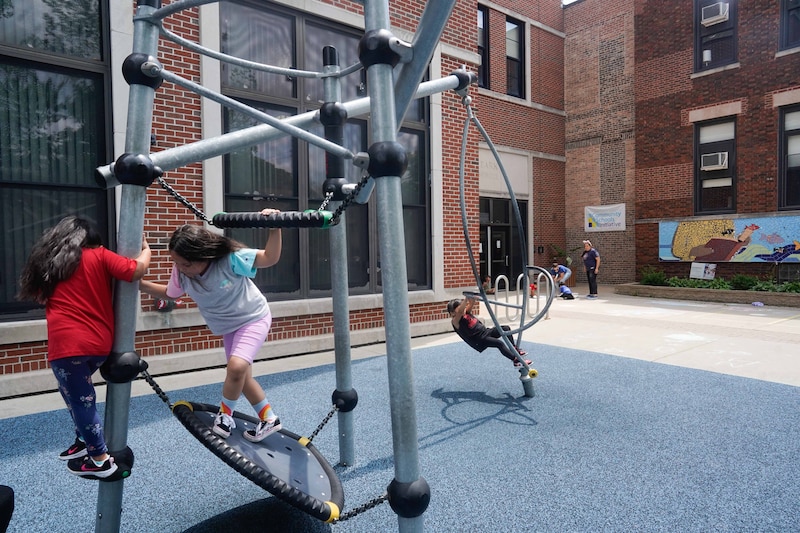
Some students on Sustainable Community School campuses said their schools need to work harder to make students feel involved in decision-making and to break with punitive discipline — central tenets of the model.
Rose Flores, a junior at Kelly High, said her school did not factor in student input before recent unpopular dress code changes. And she feels the campus has taken a harder line on student behavior post-pandemic. She recently got an in-school suspension for walking to class a few minutes late after she scrambled to change following gym class, she said.
Maldonado said the pilot campuses are “trying to break the mold of what school is from within the system.”
They are still expected to administer what the union considers too many standardized tests. They have contended with staffing shortages. And they have sometimes struggled to embrace the central idea of collaborating on key decisions with partner nonprofits, families, and students.
Still, she said, “This is the way forward for public education. It’s not perfect. It’s not easy.”
Mila Koumpilova is Chalkbeat Chicago’s senior reporter covering Chicago Public Schools. Contact Mila at mkoumpilova@chalkbeat.org.

